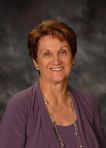Jo Ann A. Mathews's Blog, page 12
March 24, 2021
Women and Adversity: Ida B. Wells, Civil Rights Activist, Journalist

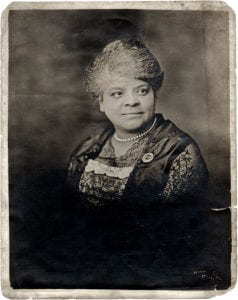
Ida B. Wells
Activist, Journalist
(voices.uchicago.edu)
Ida B. Wells died of kidney disease 90 years ago today on March 25, 1931 in Chicago. As I wrote in my ebook Women and Adversity: Honoring 23 Black Women, I grew up hearing the name Ida B. Wells. A housing project in Chicago was named after this Black writer and activist, but I didn’t know who the woman really was or what she did.
Ida B. Wells was not only the daughter of slaves, she was born a slave on July 16, 1862 in Holly Springs, Mississippi, the oldest of eight children. Despite being freed by the Emancipation Proclamation, she and her family experienced severe discrimination; however, they exercised the privilege of getting an education at the town’s Rust College, a historically Black college founded in 1866.
Her parents and a younger brother died in the yellow fever epidemic in 1878, and Wells took a job as a teacher to provide for her siblings. When an aunt invited her to Memphis in 1882, she accepted the invitation and acquired a teaching job there. She continued her education at the traditionally Black LeMoyne Normal and Commercial School in Memphis, and during the summers, she took courses at traditionally Black Fisk University in Nashville.
In May 1884 she was riding the train from Memphis to Nashville when she was told to move from the “women’s car” to the car for Blacks. Like Rosa Parks in 1955, she refused. In her autobiography she writes that the conductor “tried to drag me out of the seat, but the moment he caught hold of my arm I fastened my teeth in the back of his hand.” The result was the conductor got two other men to drag her out of the car.
The incident initiated Well’s civil rights activism. She sued the railroad and won the case in the circuit courts, but the railroad appealed, and the Tennessee Supreme Court overturned the ruling. Wells began writing articles about race and politics in the South and bought a share in the Memphis Free Speech and Headlight newspaper.
A lynching in Memphis of three Black businessmen in 1892 made Wells incensed at the injustice, and she continued to write about discrimination against Blacks. This infuriated some Whites, who destroyed her newspaper offices and equipment. She was in New York at the time but was warned she’d be killed if she returned to Memphis. She moved to Chicago, which became her permanent home.
In 1895 she married Ferdinand Barnett, a prominent Chicago attorney and founder of Chicago Conservator, the city’s first Black newspaper. The couple had four children. I never remember hearing her called or referred to as Wells Barnett. It was only Ida B. Wells.
She continued her activism in Chicago, and in 1896 she formed National Association of Colored Women. She called for an end to discriminatory hiring practices and fought for women suffrage. A conference of activists she attended later became the NAACP.
Wells was 68 when she died. Her husband died five years later in 1936.
More information:
ibwfoundation.org/about-ida-b-wells
idabwellsmuseum.org
atlantablackstar.com/2014/07/16/10-facts-may-known-ida-b-wells
voices.uchicago.edu/reproducingracean...
The post Women and Adversity: Ida B. Wells, Civil Rights Activist, Journalist appeared first on Jo Ann Mathews.
March 10, 2021
Women and Adversity: Tondalao Hall, Unfairly Imprisoned in Oklahoma

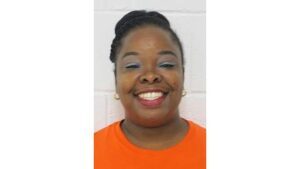
Tondalao Hall, Unjustly Imprisoned
(Oklahoma Dept. of Corrections)
I featured Tondalao Hall in my2020 ebook, Women and Adversity, Honoring 23 Black Women, which included my interview with her. Megan Lambert with the American Civil Liberties Union of Oklahoma and her colleague Cassidy Fallik arranged the interview.
The story begins in 2004 when Hall was unjustly imprisoned after she was severely beaten by her boyfriend, who also broke bones of at least one of their two young children. The man received a 10 year suspended sentence and was released on probation after serving two years in prison. Hall received a 30-year prison sentence for “failing to protect” her childr
en. Oklahoma’s “failure to protect” law blames the mother for not reporting abuse by a partner.
Hall was 19 at the time of her arrest and began her prison sentence at Mabel Bassett Correctional Center in McLoud, Oklahoma in 2006 after spending two years in jail. Hall’s requests for commutation had been declined in the past, but in 2015 a petition was circulating to free her. In October 2019 the Oklahoma Pardon and Parole Board voted unanimously to commute her sentence, and Governor Kevin Stitt granted the request. She was released November 8, 2019. Danielle Ezell, a board member for Oklahomans for Criminal Justice Reform, said, “Women are being sentenced to two times, three times, four times the amount that the abuser was.”
While in prison, Hall earned her General Education Diploma and her cosmetology license. Family members raised her children while she was incarcerated.
I contacted Lambert for an update, and she responded that there were no updates, so I assume the “failing to protect” law continues to be on the books. I remember that Hall wanted privacy when she was released, and I gather that still holds. Hall turns 37 March 15.
Further information
www.oklahoman.com/article/5636165/groups-take-aim-at-failure-to-protect-laws
apnews.com/45a6f24af72c4750ac141f3fe10b3bc9/Group-takes-aim-at-Oklahoma’s-failure-to-protect-law
www.nytimes.com/2019/11/08/us/tondalao-hall-oklahoma-commutation.html
The post Women and Adversity: Tondalao Hall, Unfairly Imprisoned in Oklahoma appeared first on Jo Ann Mathews.
February 25, 2021
Women and Adversity: Rosa Parks, Civil Rights Activist
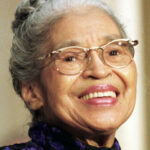
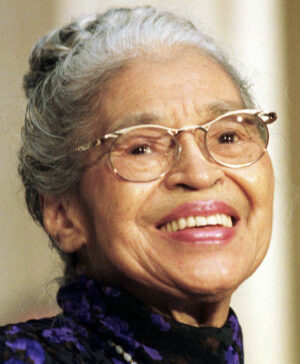
Rosa Parks (Courtesy of Guernsey’s Auctioneers and Brokers)
Women and Adversity*: Rosa Parks, Civil Rights ActivistOn December 1, 1955, Rosa Parks of Montgomery, Alabama, refused to give her bus seat to a white passenger. She was arrested because it was the law that Black passengers cede their seats to white passengers. She lost her job and received countless death threats, but her action initiated the Montgomery Bus Boycott and the modern Civil Rights Movement.
The boycott of the municipal bus company began December 5, 1955, and continued for 381 days. It ended December 21, 1956. The U.S. Supreme Court declared Montgomery’s segregated seating unconstitutional and refused to hear appeals. It issued an order to Montgomery on December 20 to integrate the buses.
Parks had experienced racial discrimination from the time she was a child. She remembered hearing a lynching one night and thought their house would burn down. Her grandfather once held a shotgun in front of their house as Ku Klux Klan members marched down the street.
Rosa McCauley was born February 4, 1913, in Tuskegee, Alabama. Her maternal grandparents were both former slaves. She married Raymond Parks, a barber, in 1932, and he encouraged her to get her high school diploma. She then made her living as a seamstress. The couple had no children.
Time magazine voted Parks one of the 100 most influential people of the 20th century.On September 15, 1996, President Clinton awarded Parks the Presidential Medal of Freedom, the highest civilian honor given by the U.S. executive branch.Parks’ husband passed away in 1977.Parks passed away October 25, 2005, in Detroit, Michigan, at the age of 92.Parks became the first women to lie in honor in the U.S. Capitol Rotunda in Washington, D.C.www.youtube.com/watch?v=NoOd5ltjj8g
www.achievement.org/achiever/rosa-parks
www.history.com/topics/black-history/rosa-parks
Rosa Parks: My Story with Jim Haskins (1992)
* I will write about the tornado that hit our house February 15 in a future blog.
The post Women and Adversity: Rosa Parks, Civil Rights Activist appeared first on Jo Ann Mathews.
February 10, 2021
Women and Adversity: Lucille Clifton First Black Poet Laureate of Maryland
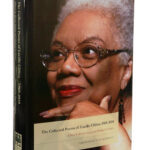
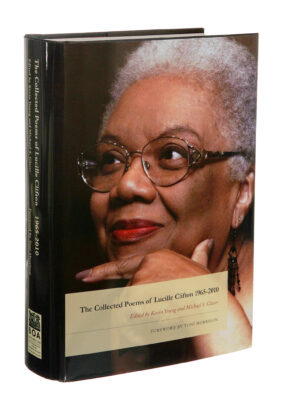
Lucille Clifton, Poet
Women and Adversity: Lucille Clifton First Black Poet Laureate of MarylandLucille Clifton aimed to have Americans realize, through her poetry and other writings, that Blacks made noteworthy contributions in the United States. She is known for the impact her poems make with the fewest words. The New York Times rated her first book of poems, Good Times, one of the best books published in 1969. She writes of survival under arduous circumstances, oppression, politics, women’s lives and family, which is the theme of this blog, Women and Adversity. Her poems like “sorrow song,” “blessing the boats” and “jasper texas 1998” bring tears at the insight she has to inhumanity in our culture. She is quoted as often saying, “In my poems I try to comfort the afflicted and afflict the comfortable.”
Thelma Lucille Sayles was born June 27, 1936, in Depew, New York, near Buffalo. She was the first in her family to graduate from high school. She attended Howard University in Washington, D.C. and Fredonia State Teachers College in New York but didn’t stay to earn a degree.
In 1958 she married Fred Clifton, a philosophy professor. The couple had six children. Lucille Clifton worked in state and federal government jobs until 1971 when she accepted a position as poet-in-residence at Coppin State College in Baltimore, MD. During her tenure there from 1972-1974 she published two collections of her poetry, Good News About the Earth in 1972, and An Ordinary Woman in 1974. She was Poet Laureate of Maryland from 1979-85.
She was visiting writer at Columbia University School of the Arts and George Washington University and later taught literature and creative writing at University of California at Santa Cruz and at St. Mary’s College of Maryland.
Clifton won the National Book Award for Blessing the Boats: New and Selected Poems, 1988-2000 in 2000, one of her ten books of poetry. She wrote more than 20 children’s books, specifically written for African Americans, and Generations, a memoir published in 1976.
Clifton died of cancer 11 years ago on February 13, 2010, in Baltimore.
She is featured in my ebook, Women and Adversity, Honoring 23 Black Women.
Carter G. Woodson founded Black History Week February 7, 1926, but it wasn’t until 1976 when President Gerald Ford designated February as Black History Month that it was officially part of the U.S. calendar. It always has a theme, but I believe that gets lost once February starts. The theme for 2021 is “Black Family: Representation identity and Diversity.”
More information
www.youtube.com/watch?v=50cQSk_sF4Q
www.poetryfoundation.org/articles/68874/a-list-of-lucille-clifton-favorites
www.nytimes.com/2019/10/02/books/lucille-clifton-reginald-dwayne-betts.html
The post Women and Adversity: Lucille Clifton First Black Poet Laureate of Maryland appeared first on Jo Ann Mathews.
January 27, 2021
Women and Adversity: Louisine Havemeyer, Suffragist, Art Collector


Louisine Havemeyer
Suffragist
Portrait by Mary Cassatt (freeart.com)
Socialite and art collector Louisine Havemeyer understood she’d probably be arrested and jailed if she participated in the suffrage demonstration in front of the White House on February 9, 1919. A group planned to burn in effigy a paper cutout of President Woodrow Wilson. Other women had been arrested and jailed for their demonstrations, but Havemeyer at 63 years old believed she had to do her part in supporting the suffragists.
She led the march to the White House and gave an impassioned speech. When she attempted to light the effigy, the police handcuffed and arrested her with 39 other women. Her family was horrified at the headlines announcing the arrests and jailings and sent her telegrams urging her to post bail. She didn’t and spent five days in jail. Havemeyer later wrote, “From them I gleaned I had stripped the family tree, broken its branches, torn up its roots and laid it prostrate in the dust.”
Louisine Waldron Elder was born July 28, 1855 in New York City to a prominent family, the second of four children. As a teen, she studied French at the prestigious Mme. Marie Del Sarte boarding school in Paris and met Mary Cassatt, the impressionist artist. She then became enthralled with art and admired the paintings by impressionists.
In 1883, Elder married wealthy divorcé Henry Osborne Havemeyer of the American Sugar Refining Company. The couple had three children: Adaline, Horace, and Electra. They built a mansion at Fifth Avenue and East 66th Street in New York City, which showcased their massive art collection.
After the death of her husband in 1907, Havemeyer became so depressed she considered suicide, but her daughter Electra encouraged her to participate in the suffragist movement. She then:
worked in The Shop, a Fifth Avenue storefront in New York City selling souvenirs and memorabilia to support the cause.marched in the 1913 suffrage parade in New York City.began speaking at suffragist events in 1914.She remained friends with Cassatt and contacted her to help plan an art show featuring Cassatt’s works along with those of fellow impressionist Edgar Degas. Cassatt agreed if Havemeyer donated proceeds to the suffrage movement. Havemeyer held the exhibit in 1915 at the M. Knoedler & Company art gallery in New York City.
Havemeyer died January 6, 1929 at the age of 73. The Metropolitan Museum of Art in New York City received almost two thousand pieces of her art collection, including works by Cassatt, Degas, and Rembrandt. I feature Havemeyer in my ebook: Women and Adversity, Saluting 23 Faithful Suffragists, available at online venues.
More information:
www.fromthesquare.org/women-won-vote-louisine-elder-havemeyer
www.facebook.com/ShelburneMuseum/videos/3196742417104909
www.dailyartmagazine.com/louisine-havemeyer
The post Women and Adversity: Louisine Havemeyer, Suffragist, Art Collector appeared first on Jo Ann Mathews.
January 13, 2021
Women and Adversity Blog: 2021


Women and their daughters do it all!
Women and Adversity Blog: 2021Along with all the people in countries around the world, U.S. residents are happy to leave 2020 behind and look forward to a prosperous, healthy 2021.
What will my blog contain in 2021? Much of what I’ve been proclaiming since I started writing Women and Adversity in January 2014. I’m going to highlight women I feature in my 2020 ebooks: Honoring 23 Black Women, Recognizing 23 Notable Mothers, and Saluting 23 Faithful Suffragists. Some are historical figures while others are living their dreams or pursuing their dreams. I will also continue to contact women writers so they can offer encouragement, information and recommendations to other women writers, especially those who are struggling to start or complete their stories and novels.
People have asked me why I chose the word “adversity” to identify my blog instead of “obstacles.”
There is a big difference. Adversity is a calamity or disaster such as what happened to Helen Keller. Struck with an undetermined illness when she was just 19 months old, Keller was left blind and deaf for the rest of her life.
Obstacles are hardships or obstructions. Keller had innumerable obstacles she overcame, such as how to read and hear. Anne Sullivan helped her overcome those obstacles, which shows that people need other people, especially when roadblocks hinder their progress. Keller went on to graduate cum laude from Radcliffe College in Cambridge, MA. She wrote books and was known worldwide for advocating for the blind, deaf and disadvantaged. She died at the age of 87.
Adversity doesn’t have to be as severe as Keller’s. Having the free lunch at school be the only food eaten all day, not having warm clothing during snowy winters, and being physically or sexually abused growing up are adverse conditions. However, women, all people, do overcome these adversities.
All of us face obstacles. The woman who wants to go to college but has no money to attend may choose to work and save money and overcome that obstacle. The single mother who has to work and care for her children may call on family or friends to help with the children.
This blog is meant to encourage women to overcome what is standing in their way so they can achieve their dreams.
More information
www.livingmagazine.net/women-of-adversity
www.forbes.com/sites/moiraforbes/2019/03/08/6-power-women-on-overcoming-adversity/?sh=26aa13555611
www.shethepeople.tv/top-stories/issues/gender-adversity-women-thrive-in-the-face-of-adversity
The post Women and Adversity Blog: 2021 appeared first on Jo Ann Mathews.
September 23, 2020
Women and Adversity: Sun Ann Jaffarian
Sue Ann Jaffarian, Novelist
Mystery Series/Short Stories
Sue Ann Jaffarian is a cheerful, upbeat person, who wove her on-the-job experience as a paralegal with the mysteries she writes, which are also woven with lots of humor. Odelia Grey, a plus-sized sleuth, is the main character in the first series Jaffarian wrote, and when asked if she is Odelia Grey, Jaffarian said her stock answer is that Odelia dresses better and swears less.
When Jaffarian retired, she chose to travel the country in a van she named Novella. She continues to write fiction, accepts speaking engagement, and does in-house pet sitting.
JAM: What was the biggest obstacle you faced when you decided to write a book in 1995?
SAJ: The biggest obstacle was staying committed to my goal. It’s so easy to doubt yourself and give up. It’s also easy to let other things get in the way. In order to reach any goal, you need to have a laser-like commitment to it.
JAM: How long did it take you to get your first agent?
SAJ: I got my first agent very quickly after finishing my first book. I started querying agents and landed one in New York surprisingly fast, which is very unusual.
JAM: Why specifically did you feel you needed a different agent?
SAJ: My first agent handled my first two manuscripts but never got them sold. We came close, but nothing came of it. When I wrote Too Big to Miss, she hated the book, but I believed in it and we parted ways. I went on to self-publish it, and the second in the series. But I knew if I wanted a serious career at that point, I needed to get it traditionally published. I queried a few agents and my current agent recognized its potential immediately. The book that my first agent hated went on to launch my career.
JAM: Did new or unique obstacles occur as you wrote each of your series?
SAJ: The biggest obstacle to any writer writing multiple series is time management. You have to juggle books, deadlines, and different lists of characters. You also have to make sure the characters in the books don’t sound too much like each other, or that the plots are not similar. Sometimes I would come up with a plot and think it doesn’t fit that series, but does another.
JAM: What obstacle/s do you face now as a writer?
SAJ: Time is always an obstacle. Even though I am now retired from my day job, I still have to stay committed to my craft and self-imposed deadlines. I continue to juggle numerous projects and struggle to keep my butt in the chair to make sure I get them done. In addition, I am mostly self-published or independently published now. It’s a new world out there for independent authors, unlike when I did it before. But now I also have to carve out time for marketing and publishing as well as writing.
JAM: Name one biographical fact you want people to know?
SAJ: I now live full-time on the road in an RV. I am a nomadic writer. I travel around, seeing this beautiful country, while still staying committed to my writing career.
My advice to new or budding writers: Remember that real wrie4rs write. They don’t sit around and talk about doing it “one day.” Writing is active, not passive. Set your goal and put one foot in front of the other until you get here. IT’s the only way to make anything happen. And believe in yourself, even when others do not.
More Information:
sueannjaffarian.com
www.facebook.com/authorsueannjaffarian
www.goodreads.com/topic/show/2271433-...
August 10, 2020
Women and Adversity, Saluting 23 Faithful Suffragists
Saluting 23 Faithful Suffragists
Not all of the early suffragists in America believed in equal rights for Black women. When they held meetings, rallies and marches, they didn’t invite their Black allies. They didn’t allow them to march shoulder-to-shoulder with White women. Instead, Black women had to have their own contingent at the end of the parade or at the end of the march.
These Black women, though, played key roles in fighting for equal footing. Some of them are featured in Women and Adversity, Saluting 23 Faithful Suffragists.
• Septima Poinsette Clark set up Citizenship Schools in South Carolina and taught Black men and women to read so they could learn what their rights were.
• Marie Foster provided citizenship classes in Selma, Alabama.
• Sarah J.S. Garnet and her sister, Susan, founded the Colored Women’s Equal Suffrage League of Brooklyn.
• Amelia Boynton Robinson was the first Black woman to run for Congress in Alabama. She is pictured in her wheelchair next to President Barack Obama on the 50th anniversary of Bloody Sunday where she had been beaten unconscious by police.
• Josephine St. Pierre Ruffin, the child of an interracial marriage in Massachusetts, wrote, “If laws are unjust, they must be continually broken until they are altered.”
• Mary Burnett Talbert, originally from Ohio and later from Buffalo, New York, was the first woman to receive the NAACP Spingarn Medal awarded for outstanding achievement by an African American.
This third book, meant to commemorate the 100th anniversary of the 19th Amendment to the Constitution which gives women the right to vote, follows the same format as my two previous books: Honoring 23 Black Women and Recognizing 23 Notable Mothers. The entries in all three books are brief sketches not complete biographies. They are meant to motivate readers to learn more about these women. Students may want to write a research paper on one of them, and teachers may recommend students get a copy to prompt them to learn more about these women. Book lovers can be fascinated by the achievements of these women.
All three books are available at goodreads.com and amazon.com, barnesandnoble.com, apple.books.com and kobo.com.

